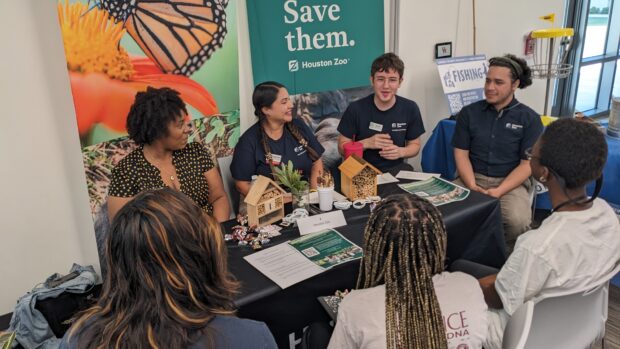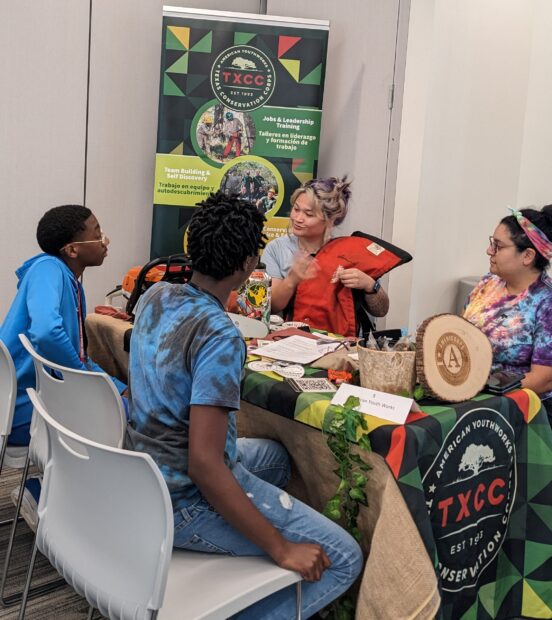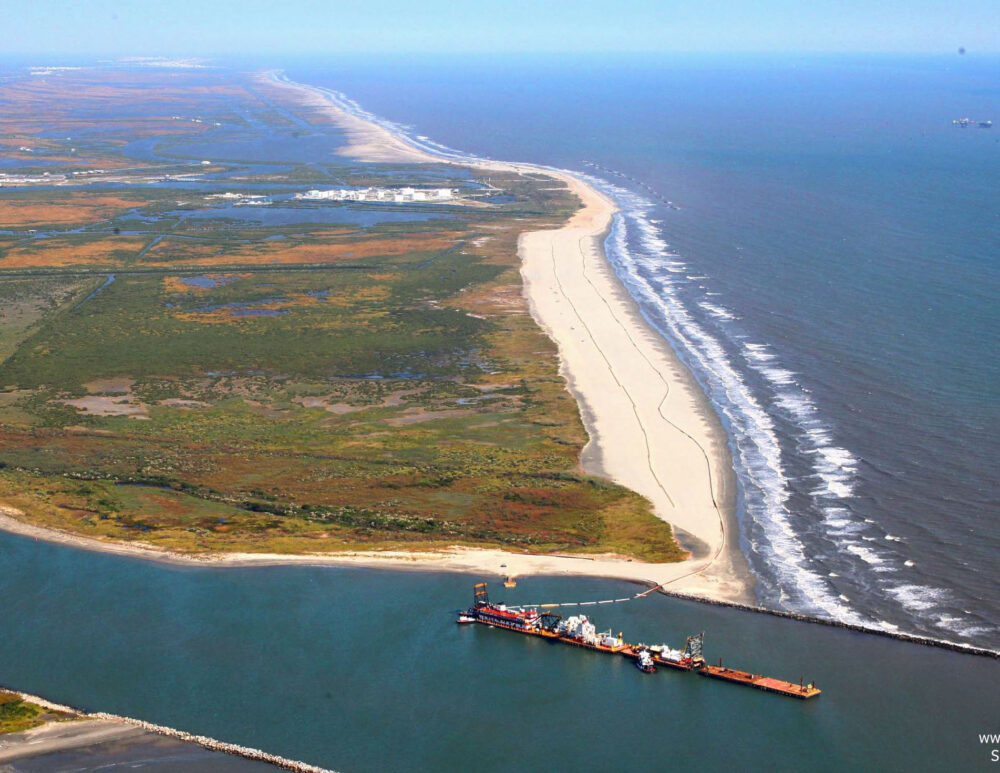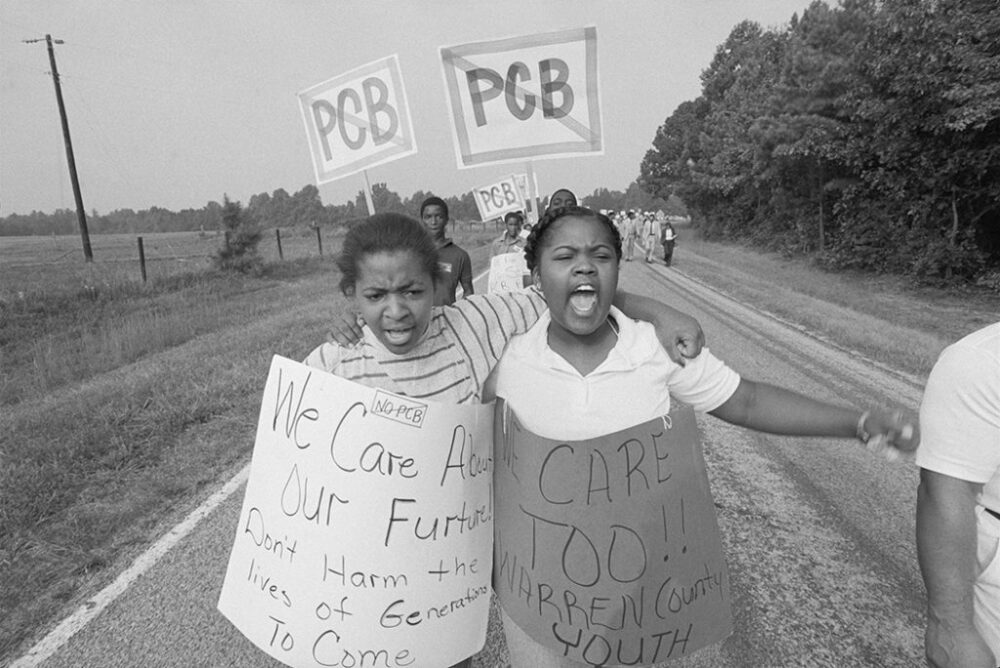We have much more to do and your continued support is needed now more than ever.
Earth Tomorrow: Houston Brings Environmental Justice to High School Student Leaders
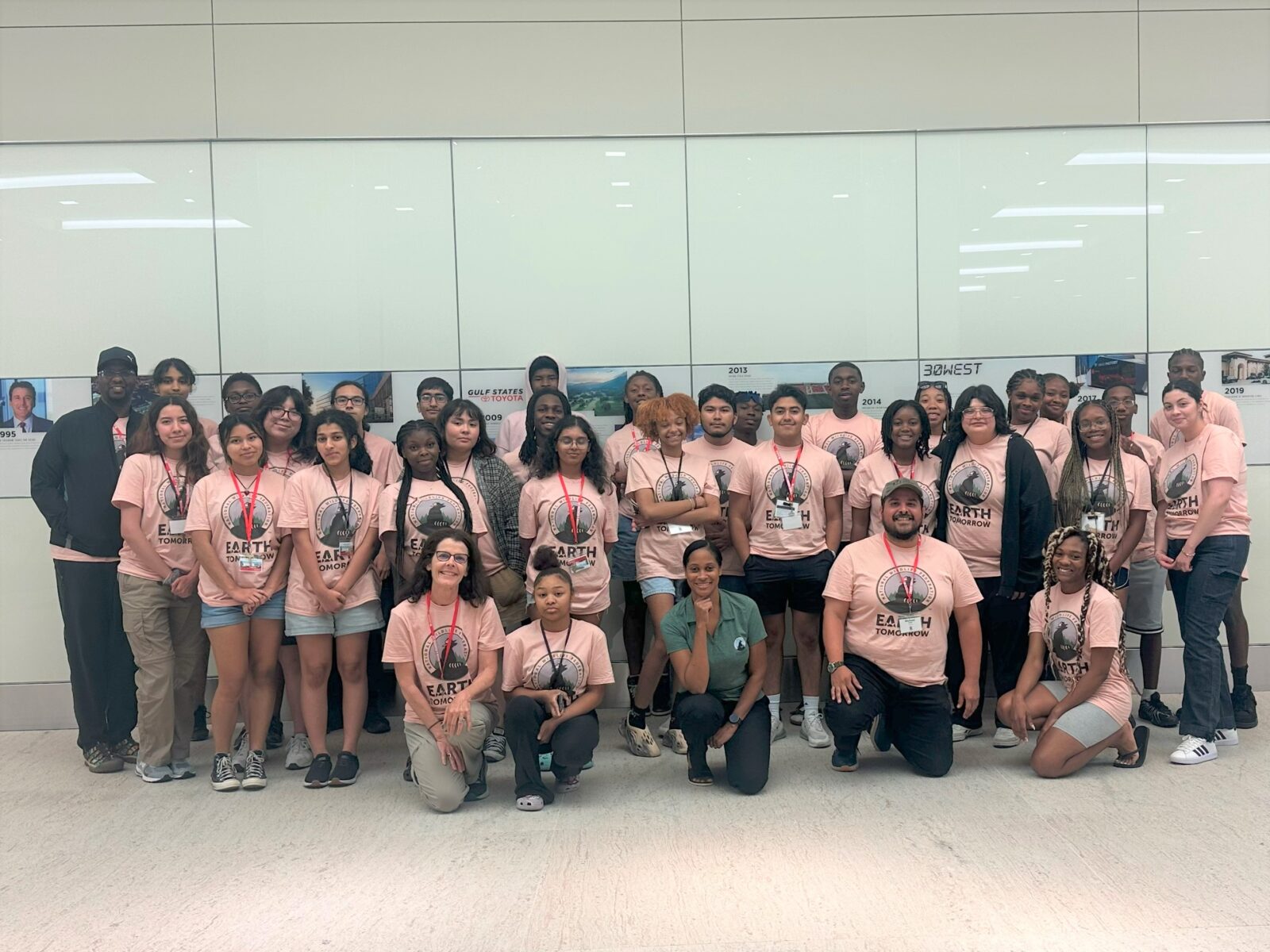
Young Leaders at Earth Tomorrow Summer Institute
With support from the Friedkin Group, this summer, a cohort of 25 high-school students across 14 different schools in the Greater Houston Area convened at the University of Houston, re-launching National Wildlife Federation’s Earth Tomorrow program in Houston with its week-long Summer Institute (ETSI). Highlighting Houston’s unique ecosystem, with its diverse culture and deep history, the institute shined a light on its rich tapestry. For the budding activists, this was a chance to explore the intersection of history, environmental justice, policy, education, and activism. Over the course of six days students attended a host of sites designed for experiential learning, spanning the richness of Houston’s Gulf Coast ecology, historic Black communities, economic centers, and institutions of higher learning.
A Living History to Environmental Justice
Woven throughout the week, activists from across Greater Houston helped participants construct an environmental justice timeline, tracing the connection between the land and its communities. The blanket of voices throughout the week-long institute told a story of the land and people that is often unheard in school classrooms.
A conversation with Jaime Gonzalez (The Nature Conservancy) gave voice to the indigenous roots of the Karankawa and their stewardship of the Gulf Coast that predates the EJ movement, and he demonstrated how current technologies like Google Earth are helping track urbanization, climate change, and its resulting effects on air, water, and land quality.
Houston, historically developed in a struggle against nature, has deep roots to environmental justice; it is here that Dr. Robert Bullard, the “father of environmental justice”, helped launch the social justice movement in the 1970s and 80s. Carrying on that work at Texas Southern University, Dr. Denae King (The Bullard Center for Climate and Environmental Justice), keynote at ETSI’s environmental justice dinner, spoke to the cumulative effort of individuals like Dr. Robert Bullard who helped form and shape the Environmental Justice movement. Joining on stage for a panel discussion, life-long activists shared their stories. Reverend James Caldwell (Coalition of Community Organizations) and other activists gave voice to their shared experiences growing up in frontline communities whose lives, health, and communities have been directly impacted by historic racism and inequitable politics. Doris Brown, a resident of Northeast Houston, spoke to the formation of West Street Recovery – demonstrating how climate disasters like Hurricane Harvey inordinately affect communities whose neighborhoods are denied resources and influence as a result of inequitable politics that target the marginalized.
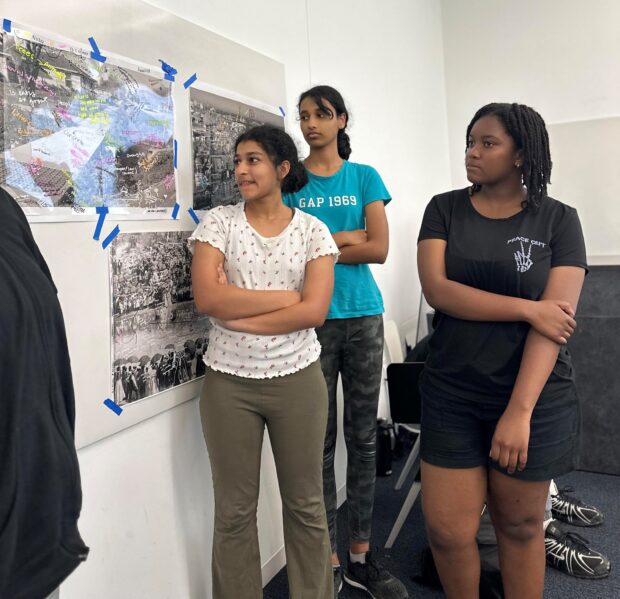
On the campus of Rice University, the Houston Climate Justice Museum dove into a discussion and exhibition of the watersheds into which our communities and commerce are woven. Meandering over 50 miles through Houston, Buffalo Bayou feeds into the Gulf of Mexico. Snapshots of the bayou over generations helped participants create mixed media mapping collages. Capturing the regional relationship through time, the discussion and exhibition piqued participants’ curiosity and sense of inquiry. It gave a platform from which to collaborate, critically think, and pull from their shared knowledge of Houston’s history.
You don’t know what you don’t know
Complementing the shared wisdom of the institute’s activists, the Summer Institute included trips to communities, habitats, and organizations working to repair the environmental injustices they were hearing about.
Walking Houston’s Sunnyside, a historic Black community, students were witness to the inspiration of local neighbors who band together to make real change. Home to an approximately 240-acre disused landfill, the neighborhood highlights the real and serious consequences of environmental injustice. Suffering the successive effect of redlining, Sunnyside has untenable soil for farming, higher cancer rates and lower life spans than surrounding communities, and insufficient access to resources. The site visit extended beyond the discussion of injustices and evinced civic duty, highlighting Sunnyside’s strong fabric of community present and the collaborative solutions being implemented. Efrem Jernigan (South Union Community Development) decried leaving politics to the politicians. The tour showed the plans of residents, former engineers, veterans, and others to reutilize the former landfill as one of the country’s largest urban solar farms, creating education and jobs for the residents of Sunnyside.
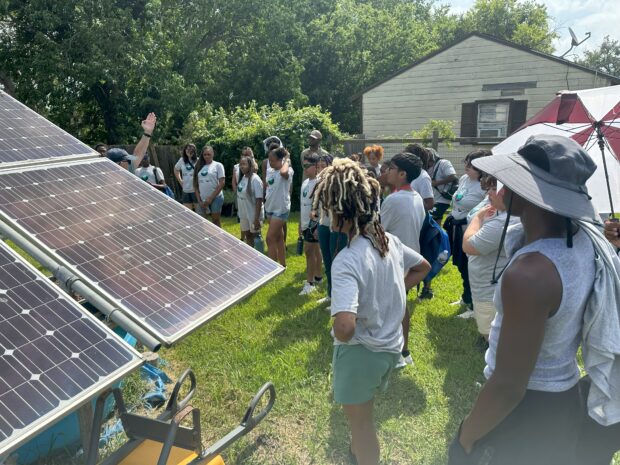
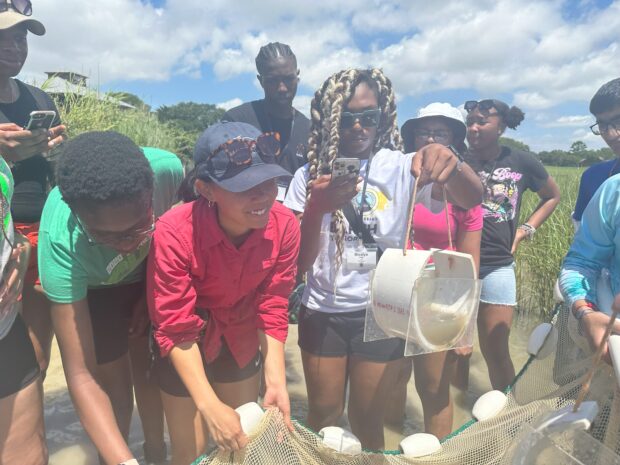
Along the shoreline and among the shade of oaks on a hot June summer day, participants paused time in a reflection of the amazing biodiversity of the Texas Gulf Coast. Guided by educators from the Galveston Bay Foundation, the health of the Trinity bay ecosystem was assessed with seining, bug netting, and water salination testing. It was a morning and afternoon of awe – in witness of fiddler crabs scuttling and grasshoppers the size of hand palms – a discovery of slowing down to enjoy, discover, and respect our Nature.
Not to be outdone, an overnight expedition to Brazos Bend State Park gave many participants their first opportunity to camp. After setting up camp in a balmy 95%+ humidity, participants explored the night sky at the George Observatory and challenged their senses, courage, and teamwork in a night hike through the forest.
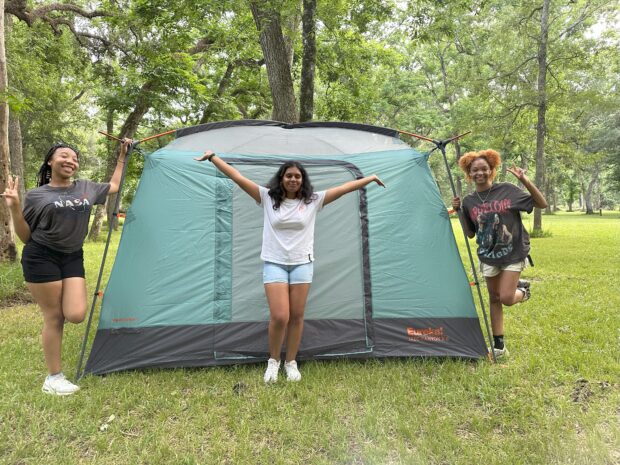
Stronger together
The environmental justice movement finds strength in the cumulative effort of individuals and organizations who recognize and commit to rectifying injustices across the different spheres of our society. Participants spent an afternoon at a career fair with representation from Texas Parks and Wildlife Department, Harris County Precinct 3, the Houston Zoo, U.S. Fish and Wildlife, American Youth Works, and other area organizations to hear about the mix of education, mission, and passion that drives progress. Reflecting on the career fair later, participants noted the myriad roles and opportunities for employment that they did not realize existed.
Throughout the week, these twenty-five participants learned to find support and camaraderie in each other. Under the safety of NWF’s leadership, participants had the freedom to extend out and develop new leadership skills, tackle opportunities, and build character by virtue of being driven outside their comfort zone. The strength of the institute and the fabric of this cohort came together for Earth Tomorrow’s closing luncheon. Drawing from the lessons of the week-long institute, participants drafted plans for EJ movements in their communities and on their campuses. Participants from this summer’s ETSI will continue to develop skills and put their ideas and plans into action, working on their high school campuses to recruit more leaders and the support of their community.

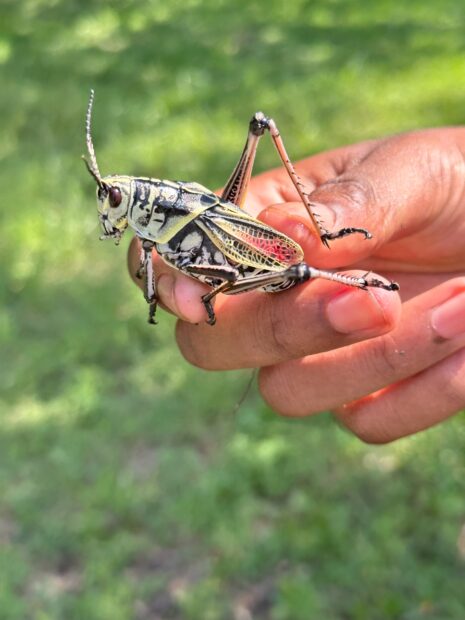
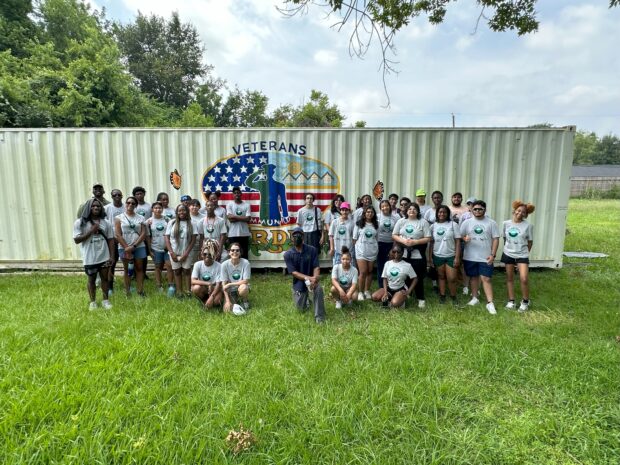
National Wildlife’s Earth Tomorrow program combines the experiences and shared wisdom of our predecessors with youth on frontline communities to create pathways for education, activism, and community leadership. Together, we mend and repair areas worn by environmental injustices throughout history and weave more equitable systems crafted from our mistakes, our successes, and our goals for a more accessible, sustainable future.

